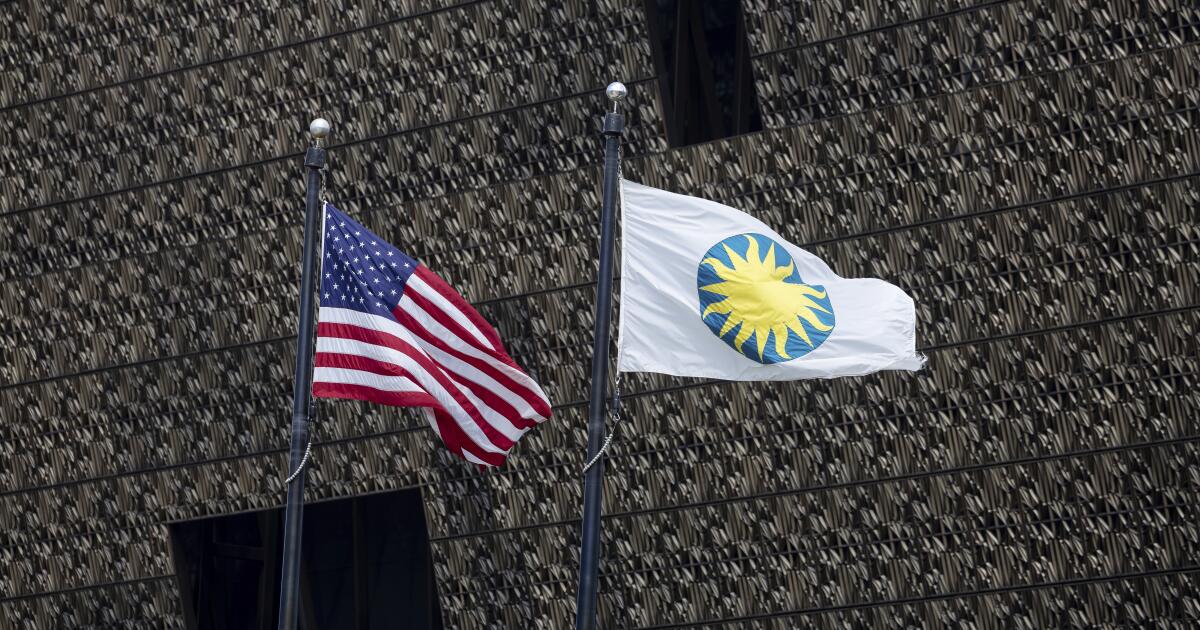UPDATE: A sweeping review by the White House of the Smithsonian Institution is set to influence how history is taught in classrooms across the United States. As educators voice concerns about potential changes, the implications for future generations are profound and immediate.
High school history teacher Katharina Matro, based in Bethesda, Maryland, expressed urgent worries about the reliability of materials she often uses from the Smithsonian. “We don’t want a partisan history,” Matro said. “We want the history that’s produced by real historians.” The review, announced recently by President Trump, aims to align the Smithsonian’s educational content with his vision of American history, focusing on “assessing tone, historical framing, and alignment with American ideals.”
The White House’s initiative is part of a broader agenda to “celebrate American exceptionalism” while removing what it considers “divisive or partisan narratives.” Critics of the review fear it may sanitize historical truths, potentially undermining the quality of education. Tina Ellsworth, president of the National Council for the Social Studies, warned, “Those are the kinds of things that teachers are really leery of because they don’t see partisanship in the sources that we’re using as being good educational practice.”
Over 80% of history teachers rely on free resources from federal museums, including the Smithsonian, according to a recent survey by the American Historical Association. These materials are trusted for their thorough examination by professionals, making them essential for classrooms that often lack updated textbooks. “That’s been one of the most influential and profoundly important ways that the federal government has invested in social studies education over the last couple of decades,” said Brendan Gillis, the association’s director of teaching and learning.
The White House’s review could reshape educational resources just as the country prepares to celebrate its 250th anniversary. A new initiative, the Founders Museum, launched in partnership with PragerU, aims to provide a curated narrative of American history. However, critics argue this project may gloss over significant historical issues.
Professor Russell Jeung of San Francisco State University fears that projects addressing racism and discrimination, such as a Smithsonian video series created during the COVID-19 pandemic, may be sidelined by the review. “I think the story will be told,” Jeung stated, “But the tragedy again and the loss is that we won’t get the national recognition that we deserve.”
The impact of these changes could resonate deeply in classrooms. Michael Heiman, a social studies teacher in Juneau, Alaska, noted that the Smithsonian’s culturally inclusive exhibits have inspired students of color, including Native American children. “We are further quieting voices that are important to our country,” Heiman warned, emphasizing the risk of discouraging underrepresented students from engaging with history.
As educators await further updates, the stakes remain high. The future of history education in the U.S. hangs in the balance as the White House continues its review of the Smithsonian’s educational content. Teachers and students alike are left wondering how their access to trustworthy historical narratives may be compromised.
What’s Next: The implications of the White House review are unfolding rapidly. Educators, historians, and advocates are closely monitoring developments, urging for transparency and inclusivity in how American history is presented in educational settings. The outcome of this review could redefine the landscape of history education just as the nation prepares to reflect on its past in the lead-up to the 250th anniversary celebrations.
